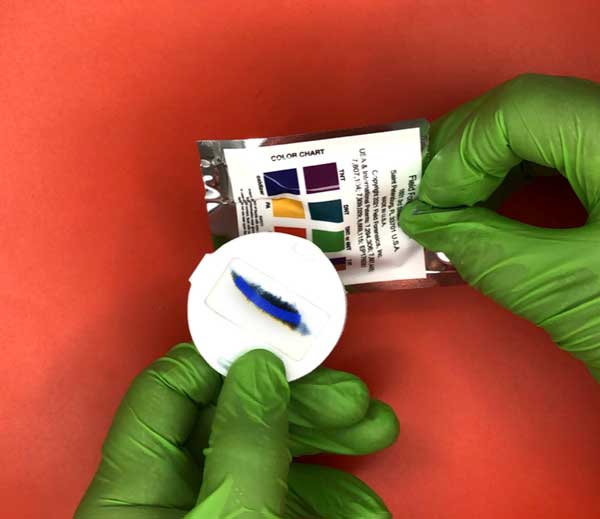Explosives
In counter-terrorism applications, be they military, law enforcement or security applications, it’s important to understand how the words detection and identification are properly used. When talking about explosives, detection is the ability to determine whether or not an explosive is present; identification is the ability to say which compound is actually there – for example, TNT, RDX, TATP, etc. As you might imagine, there is also quite a lot of flexibility in identification; for example, being able to identify a chlorate is less specific, implies less identifying power, than being able to identify a particular compound of chlorates, like potassium chlorate.
Additionally important, terminology-wise is to understand the difference between trace levels and bulk levels in the context of explosives detection and identification. A trace amount is an amount that cannot be seen with the naked eye; a bulk amount is that amount that can be seen with the human eye – even if only one crystal, if it can be seen it is a bulk amount.
At Field Forensics we offer several detection and identification systems – both instruments and disposable test kits.

EZKs are self-contained, rugged, can be carried in a shirt pocket. EZK™ detects a broad range of explosives in solid or liquid forms, at trace (invisible to the eye) or bulk levels (visible to the eye).
EZK™ discs are small yet easy to use – they require very little training. EZK™ tests for home-made explosives (HME), HME precursor chemicals, commercial and military explosives.

ELITE™ detection and identification kits are simple, rugged & reliable. They detect and identify commercial, military and home-made explosives (HME), trace and bulk.
There are three models available:
- EL100 – detects all nitrogen-based explosives and explosive precursor chemicals at trace levels.
- EL200 – detects and identifies peroxide, perchlorate and chlorate-based HME and precursors, in liquid, vapor or solid forms.
- EL300 – detects all nitrogen-based explosives plus chlorate and peroxide-based explosives.

IDEX™ series of precursor identifiers each identify one type of explosive precursor. They can be used individually to interdict trafficking of particular precursors, in combination to identify particular explosive compounds, and are also used to backup portable Raman systems to confirm the class of chemical or in cases where the material is not in the Raman library or exhibits fluorescence. IDEX™ is currently used by police and military EOD and anti-terrorist teams worldwide.

ULTRA™ units are colorimetric, disposable testers that in one step detect & identify trace or bulk HME and HME precursors, using not only a color change but a color pattern. Currently four models in the ULTRA™ range:
- ULTRA 1B6 – nitro-aromatic, aliphatic, nitrate
- ULTRA 246 – ammonium nitrate & chlorate
- ULTRA 236 – urea nitrate & ammonium nitrate
- ULTRA 459 – chlorate, perchlorate & peroxide.

Indicator™ Raman spectrometer identifies illicit narcotics, controlled drugs, explosives materials, pharmaceutical ingredients and a wide range of unknown substances. Thousands of compounds are available in FFI’s spectral libraries. It also analyzes and reports the components of mixtures.
Indicator™ is a compact, ruggedized Raman spectrometer that is incredibly powerful. It is able to analyze thousands of explosives, narcotics and toxic chemicals in seconds. Laser power is adjustable and use programmable acquisition delay when measuring energetic materials. HandyRam™ II features a durable and waterproof construction yet can also be connected to a PC for detailed spectral analysis, library and record management.

The only ETD (Explosives Trace Detector) to detect inorganic salt-based explosives such as the nitrate, chlorate and perchlorate used in home made explosives (HME).
Fast, accurate, portable and easy to use, the ETD-100 has been designed to augment any security checkpoint scenario. Complementary to traditional explosive trace detectors, the ETD-100 is optimized to detect explosive compositions that contain inorganic materials. The deployment of the ETD-100 increases the detection probability of homemade explosives and IEDs which are the predominate threat used in terrorist activities around the world.
